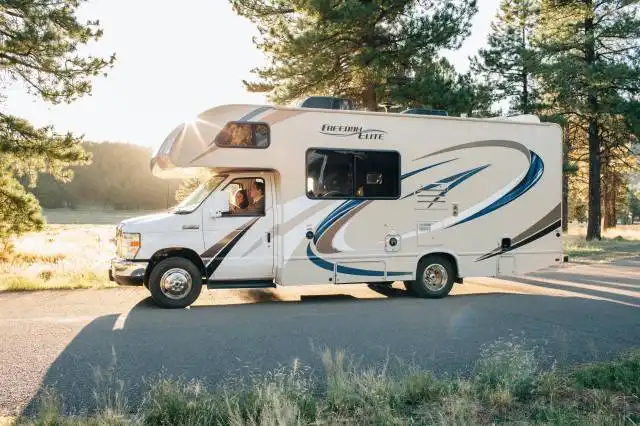Start a Limo Business
Cruising Into the Glitz and Glamour: Your Journey in the Limo Business
| Updated


LIMO BUSINESS
Jump into the world of luxury and glamour with a limo business! This ritzy enterprise provides limousine services for special events, airport transport, and more. As a limousine business owner, become the fairy godmother of every prom, the silent hero of stressful airport runs, and the secret ingredient to a memorable night out. Ride into profits smoothly on the plush backseats of your meticulously maintained fleet of limousines.
Jump to Business Plan
RELATED BUSINESS IDEAS
Browse ALL Cars & Transportation Solutions Business Ideas
Discover Your Perfect Domain
Unlock the door to your online success with our hand-picked selection of premium domain names. Whether you're starting a new venture or rebranding an existing one, the right domain can set the tone for your digital presence. Browse through our curated list, each with its unique potential to enhance your brand's visibility and credibility.
LIMO MINI BUSINESS PLAN
This a quick reality check to help you identify the strengths and weaknesses of your business concept before you dive in.
Expected Percent Margin:
- Gross Margin: 20-30%
- Net Profit Margin: 10-15%
Earnings Expectations:
- Daily Earnings: $400 - $800
- Weekly Earnings: $2,800 - $5,600
- Monthly Earnings: $12,000 - $24,000
- Annual Earnings: $144,000 - $288,000
Actions to Hit Those Numbers:
Fleet Management:
- Initial Investment: Expect to spend at least $60,000-$120,000 on a well-maintained, high-quality limo.
- Maintenance: Allocate approximately 10-15% of your revenues for vehicle maintenance.
Marketing and Customer Acquisition:
- Website and SEO: Invest in a professional website and SEO services.
- Social Media: Maintain an active social media presence and engage with your clients.
Driver and Staff:
- Staffing: Depend on the size of your business, hire reliable and professional drivers.
- Training: Provide superior customer service training to enhance the passenger experience.
Cost Controls:
- Fuel Costs: Keep a continuous check on it; this is one of the major expenses for this business.
- Insurance: Protect your investment with a complete insurance coverage.
Operational Efficiency:
- Day-to-Day Operations: Effective scheduling to minimize vehicle downtime.
- Customer Satisfaction: Prioritize on-time service and passenger satisfaction to maintain repeat clientele.
These are generalized estimations and can vary significantly depending on the size of your fleet, your operating costs, and local market conditions. Always conduct a detailed local market analysis and cost evaluation before starting your business.
NOT WHAT YOU HAD IN MIND? Here are more ideas



Browse ALL Cars & Transportation Solutions Business Ideas
Grab Your Business Website Name
Before you get caught up in the whirlwind of setting up your business, invest in a domain name. It's a small but significant step that lays the foundation for your brand and makes it easier for customers to find and trust you. Just like you wouldn't build a house without securing the land first, don't build a business without securing your domain name.
"Why? Can't that wait?" Here's why it shouldn't
Step 1: Determine if a Limo Business is Right for You
Breakdown of Startup Expenses
Before starting a limo business, it is important to understand the startup costs associated with the venture. This includes the cost of purchasing a limousine, insurance, licensing, and any other necessary permits. Additionally, you should consider the cost of hiring a driver, purchasing a GPS system, and any other necessary equipment. It is also important to factor in the cost of advertising, marketing, and any other promotional costs.
Breakdown of Ongoing Expenses
In addition to startup costs, it is important to understand the ongoing expenses associated with running a limo business. This includes the cost of fuel, maintenance, and any other necessary repairs. Additionally, you should factor in the cost of insurance, licensing, and any other permits. It is also important to consider the cost of hiring a driver, purchasing a GPS system, and any other necessary equipment.
Examples of Ways to Make Money
There are a variety of ways to make money with a limo business. The most common way is to charge customers for rides. Additionally, you can offer special packages for weddings, proms, and other special occasions. You can also offer airport transfers, corporate events, and other services. Additionally, you can offer discounts for repeat customers or offer loyalty programs. Finally, you can offer discounts for large groups or offer special rates for certain days of the week.
Step 2: Name Your Business
- Choose a name that is memorable.
When choosing a name for your limo business, it is important to pick something that is both memorable and unique. Think of a name that is catchy and easy to remember. It should also be something that reflects the services you offer and the type of limo business you are running. If you are offering luxury services, for example, you may want to include words like “luxury” or “elite” in the name. Additionally, make sure the name is not already taken by another business. You can do this by searching online or checking with your local business registration office.
- Consider your target market.
When selecting a name for your limo business, you should consider your target market. If you are targeting a specific demographic, such as business professionals, you may want to choose a name that reflects that. For example, if you are targeting business professionals, you may want to include words like “executive” or “corporate” in the name. Additionally, if you are targeting a specific geographic area, you may want to include the name of the city or region in the name.
- Make sure the name is available.
Once you have chosen a name for your limo business, you will need to make sure that it is available. You can do this by searching online or checking with your local business registration office. Additionally, you will need to make sure that the domain name is available for your website. You can do this by searching online or using a domain name registrar.
- Register the name.
Once you have chosen a name and verified that it is available, you will need to register it with your local business registration office. This will ensure that no other business can use the same name. Additionally, you will need to register the domain name for your website. This will ensure that no one else can use the same domain name.
- Protect the name.
Once you have registered the name, you should consider protecting it. This can be done by filing for a trademark or service mark. This will ensure that no one else can use the same name or a similar name for their business. Additionally, you may want to consider registering the name with the U.S. Patent and Trademark Office. This will provide additional protection for your business name.
Step 3: Secure Licenses and Permits
The third step in starting a limo business is to secure the necessary licenses and permits. Before beginning the process of obtaining licenses and permits, it is important to research the specific requirements for your area. Depending on the state, county, and city, the requirements for a limo business may vary. For example, some states may require a special chauffeur’s license, while others may require a special license for operating a limousine. Additionally, some states may require a business license, while others may require a special permit for operating a limo business. It is important to research the specific requirements for your area before proceeding with the process of obtaining the necessary licenses and permits.
Obtain Necessary Licenses and Permits
Once the necessary licenses and permits have been identified, the next step is to obtain them. This can be done by visiting the local government office or website for the state, county, and city in which the business will be located. The process of obtaining the necessary licenses and permits can take some time, so it is important to plan ahead and start the process early. Additionally, it is important to make sure all of the necessary paperwork is filled out correctly and all fees are paid in full. Once all of the necessary paperwork has been completed and the fees have been paid, the business will be able to move forward with the next steps in the process of starting a limo business.
Maintain Licenses and Permits
Once the necessary licenses and permits have been obtained, it is important to maintain them. This can be done by renewing the licenses and permits on a regular basis. Additionally, it is important to make sure that the business is in compliance with all of the regulations and laws associated with the licenses and permits. This can include making sure that the business is properly insured and that all of the vehicles are up to date with inspections and maintenance. By maintaining the necessary licenses and permits, the business will be able to continue to operate legally and safely.
Step 4: Create a Business Plan
Creating a business plan is essential for any business, and a limo business is no exception. A business plan should include an executive summary, a market analysis, a description of the services offered, a description of the target market, a description of the competitive landscape, a description of the business’s organizational structure, a description of the business’s marketing strategy, a description of the business’s financial plan, and a description of the business’s risk management strategy.
Executive Summary
The executive summary should provide a brief overview of the business, its services, and its goals. It should also include the company’s mission statement, a description of the target market, the competitive landscape, and the company’s financial plan.
Market Analysis
The market analysis should include an analysis of the current market for limo services, an analysis of the target market, and an analysis of the competitive landscape. It should also include an analysis of the potential for growth in the limo services industry.
Description of Services Offered
The description of services offered should include a detailed description of the services that the business will offer, such as airport transfers, corporate events, weddings, proms, and other special events.
Description of Target Market
The description of the target market should include an analysis of the demographic and psychographic characteristics of the target market, such as age, gender, income level, and lifestyle.
Description of Competitive Landscape
The description of the competitive landscape should include an analysis of the current competitors in the limo services industry, their strengths and weaknesses, and the potential for new entrants into the market.
Description of Organizational Structure
The description of the organizational structure should include an analysis of the roles and responsibilities of the business’s employees, the structure of the business’s management team, and the business’s organizational chart.
Description of Marketing Strategy
The description of the marketing strategy should include an analysis of the business’s marketing objectives, the strategies that the business will use to reach its target market, and the tactics that the business will use to implement its marketing strategy.
- Description of Financial Plan The description of the financial plan should include an analysis of the business’s startup costs, ongoing expenses, and projected revenues. It should also include an analysis of the business’s cash flow and an analysis of the financial risks associated with the business.
- Description of Risk Management Strategy The description of the risk management strategy should include an analysis of the potential risks associated with the business, such as legal risks, financial risks, and operational risks. It should also include an analysis of the strategies that the business will use to mitigate these risks.
Step 5: Find a Location
- When looking for a location for a limo business, it is important to consider the size of the location and the amount of traffic it will receive.
- It is also important to consider the cost of the location, as this will be a major factor in the overall budget of the business.
- Additionally, the location should be easily accessible for customers, and should be close to popular destinations and attractions.
- It is also important to consider the local laws and regulations that may affect the business, such as zoning laws, parking regulations, and noise ordinances.
- Finally, it is important to consider the competition in the area and how it may affect the business.
Finding a Suitable Location
- Once the considerations for finding a location have been taken into account, it is time to begin the search for a suitable location.
- The best way to find a suitable location is to research the local area and look for properties that meet the criteria outlined in the considerations.
- It is also important to consider the potential for growth and expansion, as the business may need to move to a larger location in the future.
- Once a potential location has been identified, it is important to visit the property and assess its suitability.
- Additionally, it is important to research the local market and determine if the location is in an area that is likely to attract customers.
Step 6: Purchase Equipment and Supplies
When starting a limo business, there are certain pieces of equipment and supplies that are necessary for the business to run. This includes limousines, of course, as well as other items such as a GPS system, a credit card processing system, a website, and a phone system. Additionally, you will need to purchase items such as insurance, uniforms, and marketing materials.
Where to Purchase Equipment and Supplies
When it comes to purchasing the necessary equipment and supplies for your limo business, you have a few options. You can purchase the equipment and supplies from a variety of vendors, both online and in-person. Additionally, you may be able to purchase used equipment and supplies from other limo businesses that are closing or downsizing. It is important to compare prices and quality when shopping for equipment and supplies, as this can help you save money in the long run.
Financing Options
If you do not have the funds to purchase the necessary equipment and supplies for your limo business, there are a few financing options available. You can apply for a business loan from a bank or other financial institution, or you can seek out investors who are willing to provide the necessary funds. Additionally, you can look into leasing options for certain pieces of equipment or supplies, which can help you save money in the short term.
Maintenance
Once you have purchased the necessary equipment and supplies for your limo business, it is important to keep up with the maintenance of these items. This includes regularly inspecting the limousines, keeping up with the maintenance of the GPS system, and ensuring that the website and phone system are functioning properly. Additionally, you should be sure to regularly replace any uniforms or marketing materials that may become worn or outdated.
Step 7: Market Your Business
Once you have your business up and running, you will need to market it in order to attract customers. There are many different marketing strategies you can use, including:
- Social media: Create a presence on social media platforms like Facebook, Twitter, and Instagram. Post regularly about your services and any special offers you may have.
- Advertising: Place ads in local newspapers, magazines, and online. You can also purchase billboard space or radio ads.
- Networking: Attend local events and meet-ups related to the limo industry. This is a great way to make connections and build relationships with potential customers.
- Referrals: Ask your existing customers to refer their friends and family to your business. Offer incentives such as discounts or free services for referrals.
- Online reviews: Encourage your customers to leave reviews on sites like Yelp and Google. Positive reviews can help attract new customers.
Tips for Effective Marketing
When it comes to marketing your limo business, there are a few tips to keep in mind:
- Have a clear message: Make sure your message is concise and easy to understand.
- Focus on your target audience: Identify who your target customers are and tailor your marketing to them.
- Be consistent: Consistency is key when it comes to marketing. Make sure you are posting regularly and engaging with your customers.
- Track your results: Keep track of your marketing efforts and measure the results. This will help you determine which strategies are working and which need to be adjusted.
- Have fun: Marketing should be fun and creative. Don’t be afraid to experiment with different tactics and find what works best for you.
Step 8: Hire Employees
Determine the type of employees needed. When it comes to hiring employees for a limo business, it is important to determine the type of employees needed. Depending on the size of the business, the types of employees needed may vary. For instance, if the business is small, the owner may only need to hire a few drivers and a dispatcher. On the other hand, if the business is larger, the owner may need to hire additional staff such as a mechanic, a customer service representative, and an accountant.
Post job openings. Once the type of employees needed is determined, the next step is to post job openings. This can be done in a variety of ways, such as through online job boards, local newspapers, and job fairs. When posting job openings, it is important to include a detailed description of the job duties, the required qualifications, and the salary range.
Screen applicants. Once the job openings are posted, the next step is to screen applicants. This can be done by conducting interviews, checking references, and running background checks. During the screening process, it is important to ensure that the applicants meet the qualifications and have the necessary skills to perform the job duties.
Train employees. After the applicants have been screened, the next step is to train the employees. This can be done through a variety of methods, such as providing written materials, conducting role-playing activities, and providing on-the-job training. It is important to ensure that the employees are properly trained so that they can perform their job duties effectively.
Establish policies and procedures. The last step in hiring employees is to establish policies and procedures. This includes setting expectations for employees, such as punctuality, dress code, and customer service. It is also important to establish policies and procedures for handling customer complaints and resolving disputes. By establishing policies and procedures, the business will be able to ensure that employees are performing their job duties in a professional manner.
Step 9: Monitor Your Business
Track Your Finances To ensure that your limo business is profitable, you need to track your finances. This includes tracking your income and expenses. Make sure to keep accurate records of your income and expenses, so that you can easily identify areas where you can save money or increase your profits.
Monitor Your Competition It’s important to stay up to date on what your competitors are doing. Monitor their prices, services, and promotions. This will help you stay competitive and ensure that you are offering the best services and prices for your customers.
Evaluate Your Performance Take time to evaluate your performance. This includes evaluating your customer service, the quality of your services, and the overall success of your business. This will help you identify areas where you can improve and make adjustments to ensure that your business is successful.
Stay Up to Date on Industry Trends It’s important to stay up to date on industry trends and developments. This will help you stay ahead of the competition and ensure that you are offering the best services and prices for your customers.
Monitor Your Reviews It’s important to monitor your reviews and feedback from your customers. This will help you identify areas where you can improve and make adjustments to ensure that your customers are satisfied with your services.
EXPLORE MORE CATEGORIES
Browse ALL Business Idea Categories
TAKE THE NEXT STEPS










